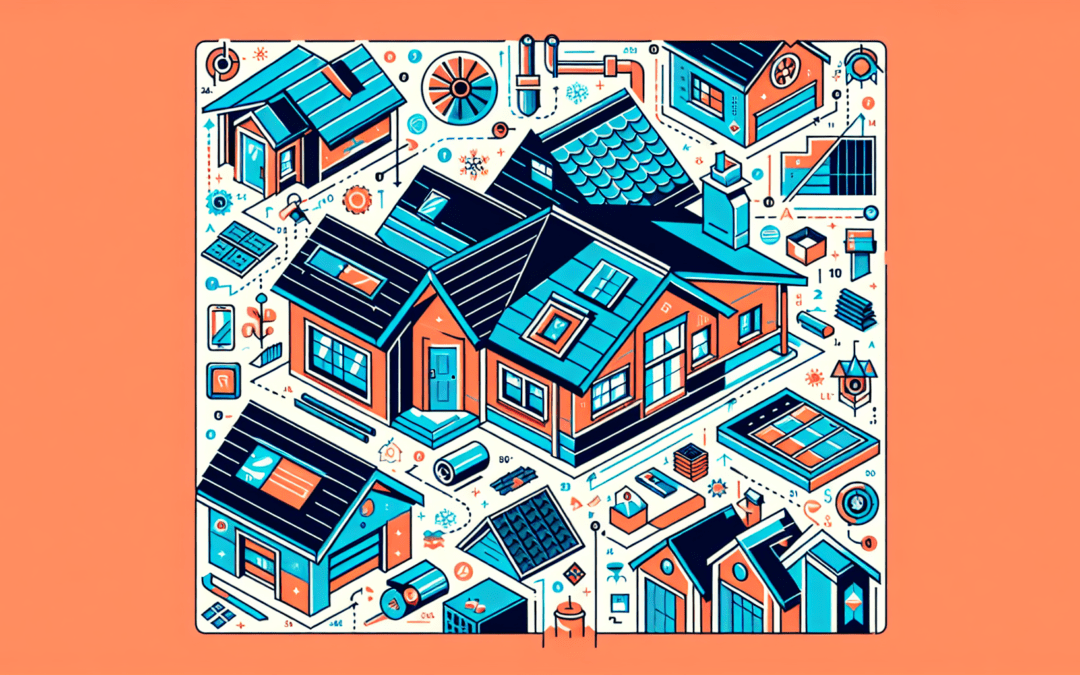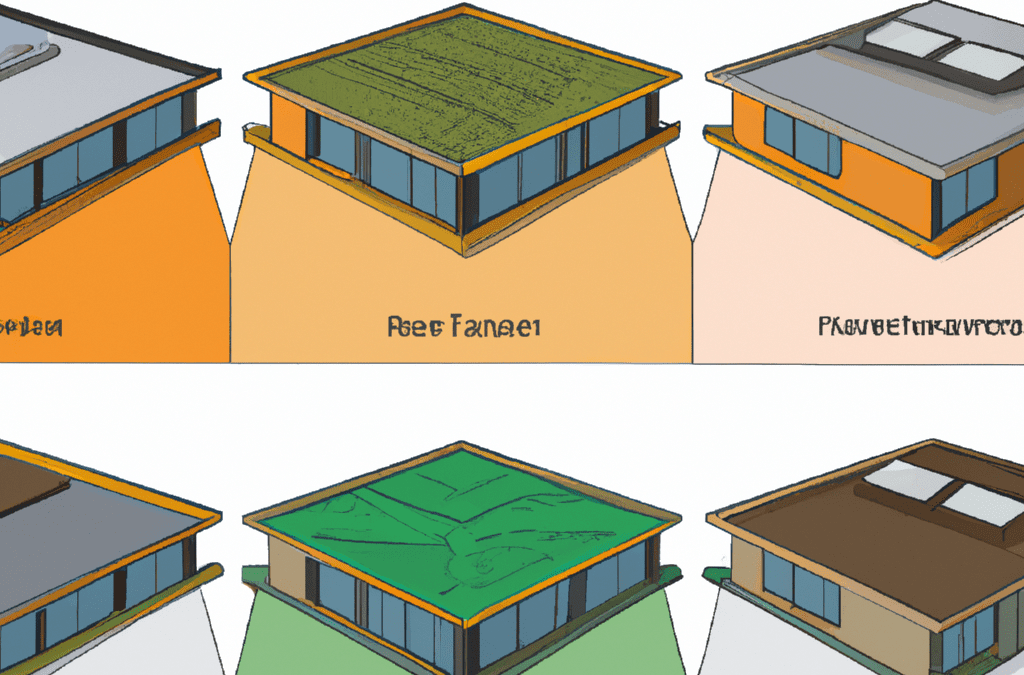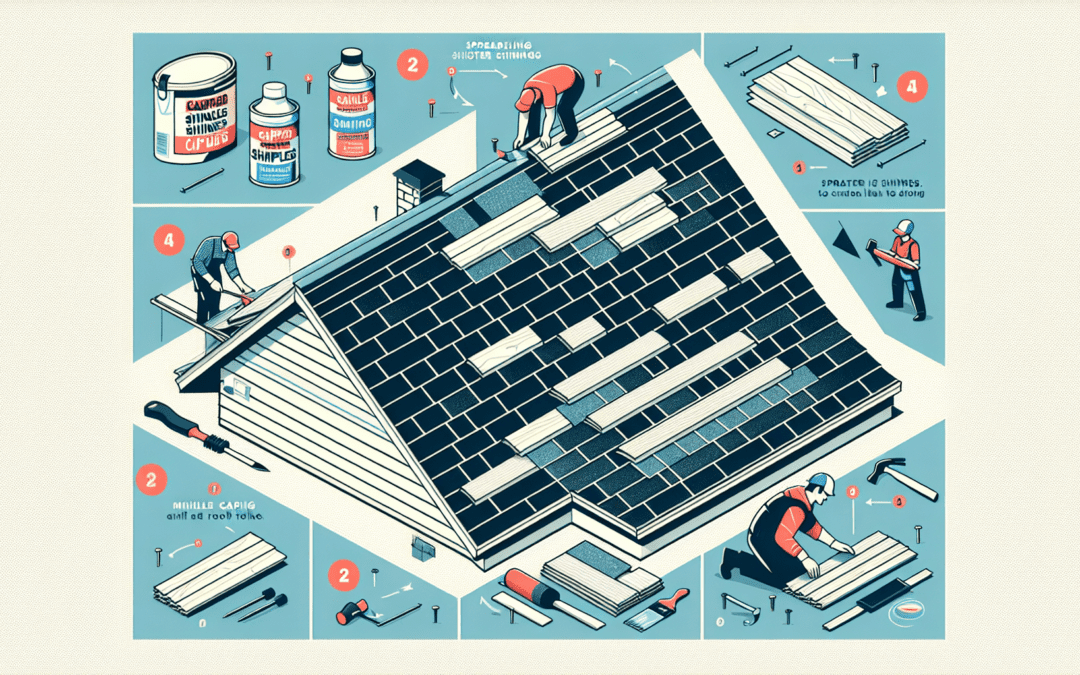
Oct 27, 2023 | Roofing
When severe weather or an unforeseen accident damages your roof, it’s crucial to address the issue promptly to prevent further damage to your home. An emergency roof repair can protect your home from leaks, structural damage, and potentially expensive repairs down the line. Here’s a quick guide to navigate through the emergency roof repair process smoothly and effectively.
Assess the Damage
First, safely assess the extent of the damage. You can visually inspect your roof from the ground using binoculars. Look for missing shingles, noticeable holes, or any debris that may have caused damage. Avoid climbing onto the roof yourself, especially during or immediately after bad weather, as it could be unsafe. If the damage is extensive, it’s advisable to contact a professional roofing contractor for a thorough inspection.
Contact Your Insurance Company
After assessing the damage, contact your insurance company as soon as possible. Most homeowner insurance policies cover damage caused by unexpected events like storms. Your insurance company will guide you through the claims process and may send an adjuster to inspect the roof damage. It’s essential to document the damage with photographs and keep records of any repair estimates and receipts as these may be required by your insurance company.
Temporary Fixes
While waiting for professional repairs, it might be necessary to perform temporary fixes to minimize further damage, especially if there is an active leak inside your home. Covering the damaged area with a waterproof tarp is one of the most common temporary solutions. Secure the tarp over the damaged section by nailing down the edges into the roof’s solid areas or by using heavy-duty straps. Ensure the tarp extends beyond the damaged area to prevent water from leaking underneath. However, it’s best to have a professional handle this if possible, as it can be dangerous.
Choosing a Professional Roofing Contractor
Selecting the right professional roofing contractor for emergency roof repair is critical. Look for a licensed and insured contractor with good reviews and a solid reputation in the community. A reliable contractor will offer a transparent estimate, explain the required repairs, and provide a timeline for completing the work. Be wary of contractors who show up unsolicited after a storm and those who ask for full payment upfront.
Prevent Future Damage
Once your roof has been repaired, consider taking steps to prevent future damage. Regular roof maintenance, including annual inspections and clearing debris like leaves and branches, can help identify potential issues before they become major problems. In areas prone to severe weather, consider upgrading your roofing materials to ones that are more resistant to wind, hail, and other elements.
Emergency roof repair can be a stressful experience, but with the right approach, you can navigate it with minimal stress. By quickly assessing the damage, contacting your insurance company, implementing temporary fixes, choosing a reliable contractor, and taking preventive measures, you can protect your home and your peace of mind.

Oct 19, 2023 | Commercial, Roofing
Commercial roofing plays a crucial role in protecting business premises from the elements. With various types of commercial roofing available, understanding the differences, including their benefits, can help property owners and managers make informed decisions. This article will explore the most common types of commercial roofing systems and their respective advantages.
1. Built-Up Roofing (BUR) Systems
One of the oldest and most reliable types of commercial roofing, Built-Up Roofing (BUR), is known for its layered construction. This roofing system typically comprises alternating layers of bitumen (asphalt) and reinforcing fabrics called roofing felts. The multiple layers create a durable barrier that provides excellent protection against water, UV rays, and mechanical damage.
Benefits: BUR systems offer a robust, long-lasting waterproofing solution with relatively low maintenance requirements. Their thermal properties also contribute to reducing heating and cooling costs.
2. Metal Roofing
Metal roofing is increasingly popular for commercial buildings, thanks to its durability, sustainability, and variety of aesthetic options. Common materials include steel, aluminum, copper, and zinc. Metal roofs can be designed to mimic other roofing materials, such as tiles or shingles, making them versatile for different architectural styles.
Benefits: Metal roofs are known for their longevity, with lifespans often exceeding 50 years. They are highly resistant to extreme weather conditions and fire, and they reflect solar radiant heat, which can reduce cooling costs. Additionally, metal is recyclable, making it an environmentally friendly option.
3. Single-Ply Membranes
Single-ply membrane roofing systems are sheets of rubber or other synthetics that can be ballasted (held down with rocks), mechanically fastened, or chemically adhered to insulation creating a layer on the top of a commercial building. The most common types are Ethylene Propylene Diene Monomer (EPDM), Thermoplastic Olefin (TPO), and Polyvinyl Chloride (PVC).
Benefits: These systems are lightweight, flexible, and resistant to UV radiation. They offer excellent weatherability and are relatively easy to install. Single-ply membranes are also effective in reflecting sunlight and heat away from the building, contributing to energy efficiency.
4. Modified Bitumen Roofing
Modified bitumen roofing is an evolution of the older BUR system, incorporating modern materials and technologies. It combines layers of bitumen modified with polymers or rubbers, reinforced with fiberglass or polyester fiber matting, to increase durability, flexibility, and temperature resistance.
Benefits: This type of roofing provides strong resistance against foot traffic, punctures, and tears. It’s relatively easy to repair and maintain, and the installation process allows for greater flexibility in terms of weather conditions.
5. Green Roofing
Green roofing is an eco-friendly solution that involves the installation of vegetation layers over a waterproof membrane, often complemented with a root barrier and irrigation systems. Green roofs can help reduce the urban heat island effect, manage stormwater, and improve air quality.
Benefits: Beyond their environmental advantages, green roofs can enhance the aesthetic appeal of a building, provide additional insulation, and potentially increase the roof’s lifespan by protecting the waterproofing membrane from UV radiation and physical damage.
Conclusion
Choosing the right commercial roofing system depends on various factors, including climate, the building’s structure, aesthetic preferences, and budget. Each type of roofing offers distinct benefits, ranging from durability and energy efficiency to environmental sustainability. Consulting with qualified roofing professionals can help determine the most appropriate option for a specific commercial property.

Oct 10, 2023 | Materials, Roofing, Suppliers
A flat roof is a type of roof that is nearly level or has a very slight pitch. These roofs are commonly found on commercial buildings, modern residential properties, and some historical buildings. Flat roofs have their own unique characteristics and come in different types. Below are some of the most common types of flat roofs:
Built-Up Roof (BUR)
A Built-Up Roof, also known as a BUR roof, is a traditional type of flat roof that consists of multiple layers of waterproof materials. These layers typically include gravel and tar. BUR roofs are known for their durability and longevity, making them a popular choice for commercial buildings.
Modified Bitumen Roof
Modified bitumen roofs are a modern alternative to BUR roofs. They are made from asphalt and a variety of rubber modifiers and solvents. These roofs are easy to install and maintain, making them a cost-effective option for flat roofs.
Single-Ply Membrane Roof
Single-ply membrane roofs are made from a single layer of synthetic material. There are three main types of single-ply membranes: TPO (thermoplastic polyolefin), PVC (polyvinyl chloride), and EPDM (ethylene propylene diene terpolymer). These roofs are lightweight, flexible, and resistant to UV radiation.
Green Roof
A green roof, also known as a living roof, is a flat roof that is partially or completely covered with vegetation and a waterproofing membrane. Green roofs provide insulation, reduce stormwater runoff, and improve air quality. They are a sustainable and eco-friendly option for flat roofs.
Metal Roof
Metal roofs are becoming increasingly popular for flat roofs due to their durability and longevity. They are made from metal panels or shingles and can be made from a variety of metals such as aluminum, steel, or copper. Metal roofs are lightweight, fire-resistant, and recyclable.
When choosing the right type of flat roof for your building, consider factors such as cost, durability, maintenance, and energy efficiency. Each type of flat roof has its own advantages and disadvantages, so it’s important to consult with a roofing professional to determine the best option for your specific needs.

Oct 6, 2023 | Materials, Roofing, Shingles
Have you ever looked at the top of a house and noticed a line of shingles running along the peak? That’s called capping. Capping shingles are the last pieces added when roofing, and they protect your house from water and damage. This guide will help you understand what capping shingles are and the basic steps to put them on your roof.
What Are Capping Shingles?
Capping shingles are special shingles used to cover the very top of a roof, where two sides meet. This part is also known as the ridge. Capping shingles are important because they keep water from getting into your house. They’re like the hat of your home, keeping it dry and safe.
What You Need
Before you start, here’s what you’ll need:
- Capping shingles (You can sometimes use regular shingles, but there are also special ridge shingles).
- Nails (roofing nails are best).
- A hammer or nail gun.
- A utility knife for cutting shingles to size.
Step-by-Step Guide to Capping Your Roof
Step 1: Prepare the Area
First, make sure the ridge of your roof is ready. If there are old shingles, remove them and clean the area. You want a flat surface for the new shingles.
Step 2: Installing the First Shingle
Begin at one end of the roof ridge. Place the first capping shingle so it overhangs slightly on both sides. Nail it down securely, usually with two nails on each side.
Step 3: Laying the Rest of the Shingles
Take the next shingle and place it on top of the first one so that it covers the nails from the first shingle. Keep going, making sure each new shingle overlaps the previous one. This overlapping pattern helps keep water out.
Step 4: Finishing Up
When you get to the other end of the ridge, you might have to trim the last shingle to fit. Use your utility knife to cut it to the right size, then nail it down like the others.
Extra Tips
Here are some bonus tips to make sure your roof capping goes smoothly:
- Always make sure to use enough nails to keep your shingles secure, but not so many that you damage them.
- Be very careful on the roof. It can be dangerous, especially if it’s steep. It might be a good idea to have someone help you or even to hire professionals if you’re not comfortable.
Conclusion
Adding capping shingles is an important part of making sure your roof is well-protected. By following these steps, you can help keep your home dry and secure. Remember, if you’re ever unsure, it’s okay to ask for help from someone who knows how to do it.





